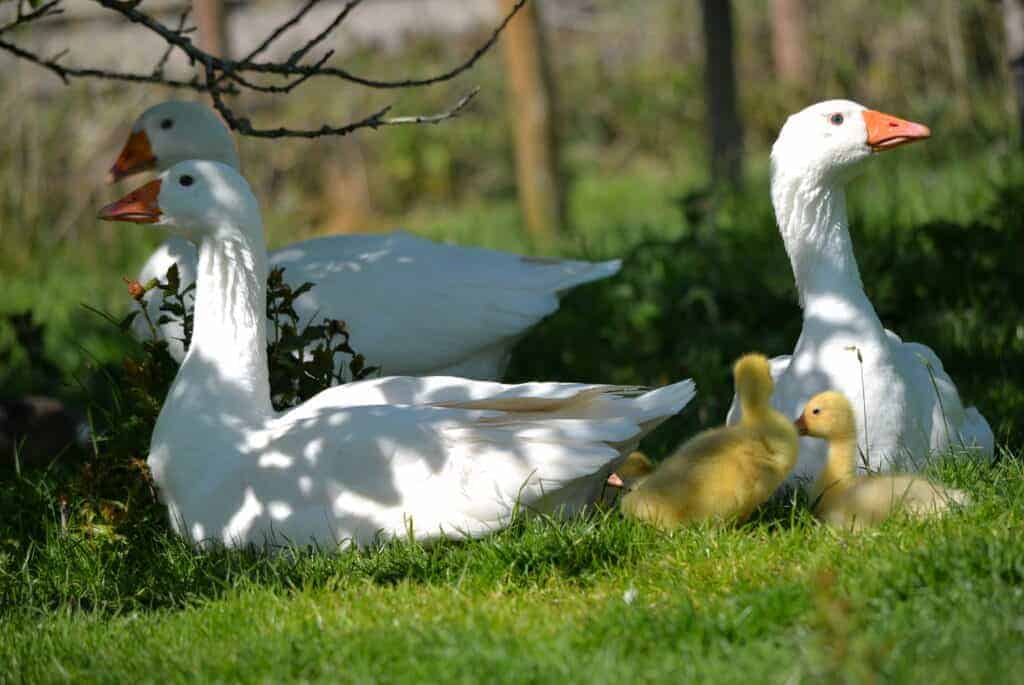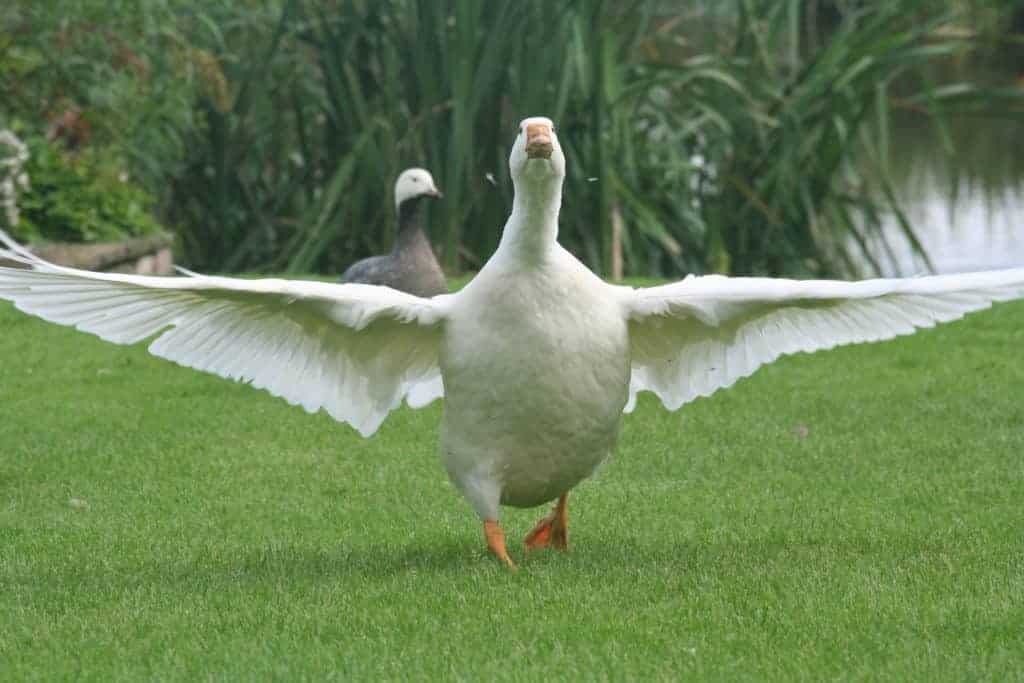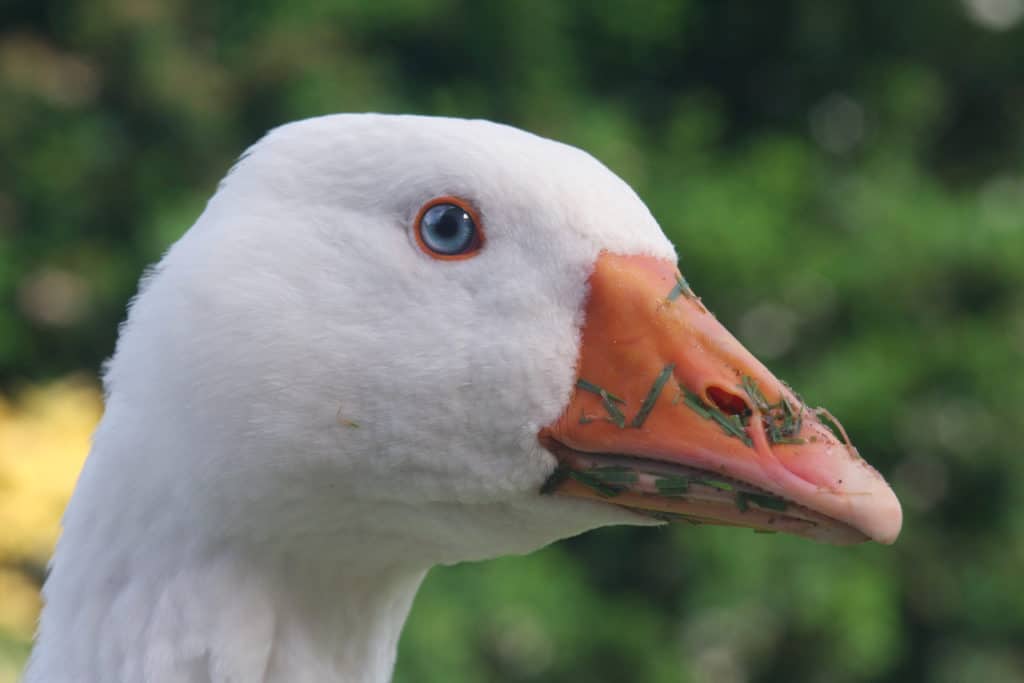Roman Goose

With piercing pale blue eyes and orange-pink beak and legs, the modern Roman Goose should be pure white. Despite being said to be one of the oldest breeds of domestic goose, the UK exhibition standard was not published until 1954. Some 50 years earlier, stock had been imported from Italy.

Light breed
Domesticated Greylag Goose Anser anser
Roman Geese are small and chubby. White geese are said to have raised the alarm when Rome was attacked by the Gauls, thus saving the city. Flocks of small white geese became common in central Europe. They may have evolved independently from the goose of Rome – or be descended from these ‘Italian’ geese.

There are several regional white breeds of geese in central Europe. Diepholtz Geese are slightly larger than our Roman; Czech Geese are slightly smaller. Whatever the country, people do seem to like small, white geese as a contrast to the coloured and the larger breeds.
The UK standard for the Roman specifies ganders at 5.5-6.5 kg and geese at 4.5-5.5 kg.

Roman Geese are good layers, starting as early as January. They may lay several clutches up to early summer and some strains can lay up to 60 eggs a year. Temperament varies according to the strain, and how they have been handled as youngsters. You can expect them to live up to 20 years if health is maintained.
Share this page